Abstract
We have previously found that optimum recovery of Chlamydia trachomatis in microdilution plate culture required multiple blind passages. However, others have found this not to be the case for culture in vials. In the present study, the effect on recovery of the use of vials (as opposed to microdilution plates) and the effect of vortexing, sonication, or both were compared. Three different passage techniques were also evaluated. Vortexing or sonication resulted in equivalent recoveries. However, compared with vortexing alone, a combination of vortexing and sonication increased recovery from 95 (78%) to 114 (94%) of 121 positive specimens (P = 0.002). In multiple-passage experiments, the combination of vortexing and sonication, compared with vortexing only, increased the proportion of isolates recovered with no more than a single passage from 81 to 96%. Substitution of vials for microdilution plates increased recovery with only a single passage to greater than 96%, irrespective of whether sonication was employed. The most sensitive technique for single-passage technique was one using blunt scraping of cell monolayers with passage of two monolayers to one. The sensitivity of cell culture for C. trachomatis is highly dependent on the technique(s) employed. However, the combination of sonication and vortexing of clinical specimens enhanced recovery in microdilution plates, and a single blind passage did so in both microdilution plates and vials. Consideration should be given to their use for routine clinical cultures.
Full text
PDF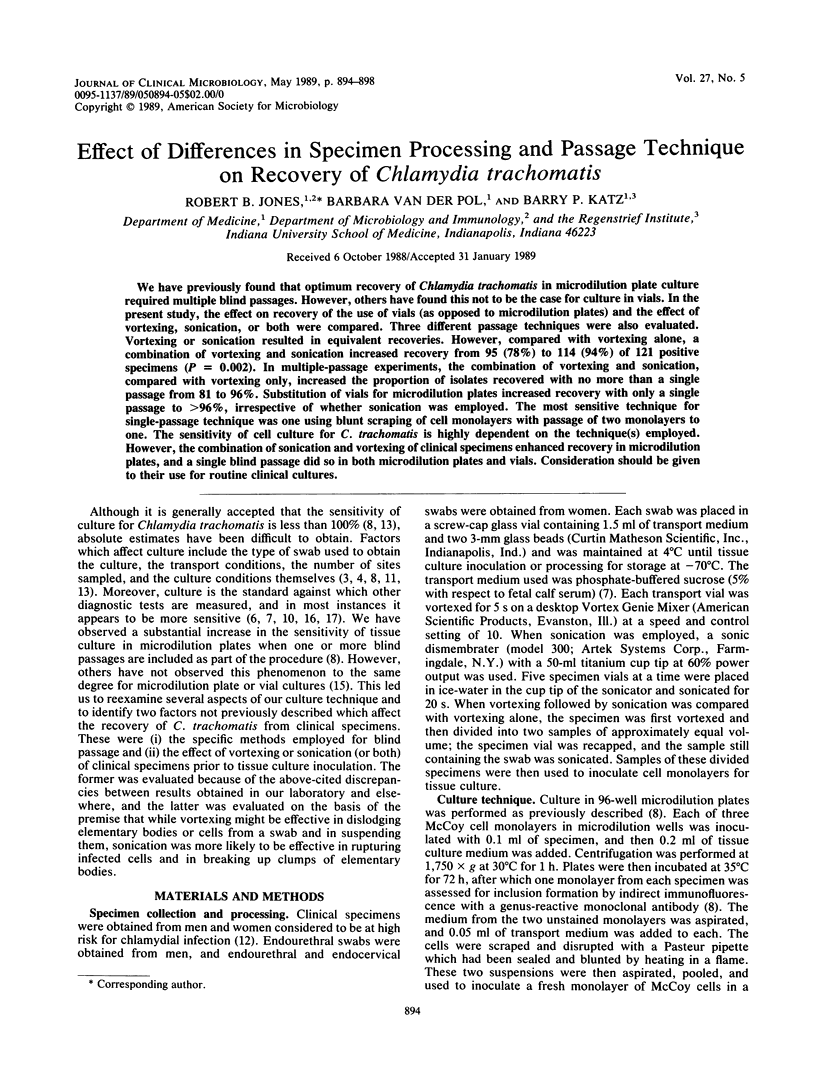
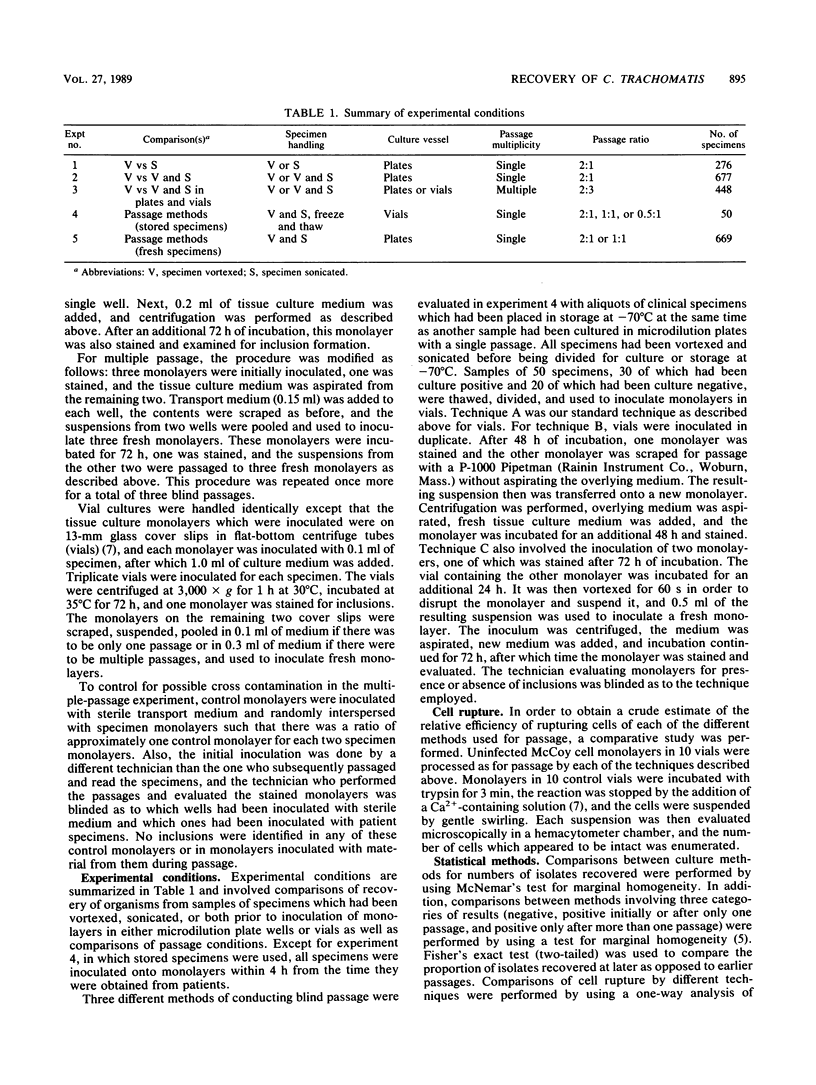
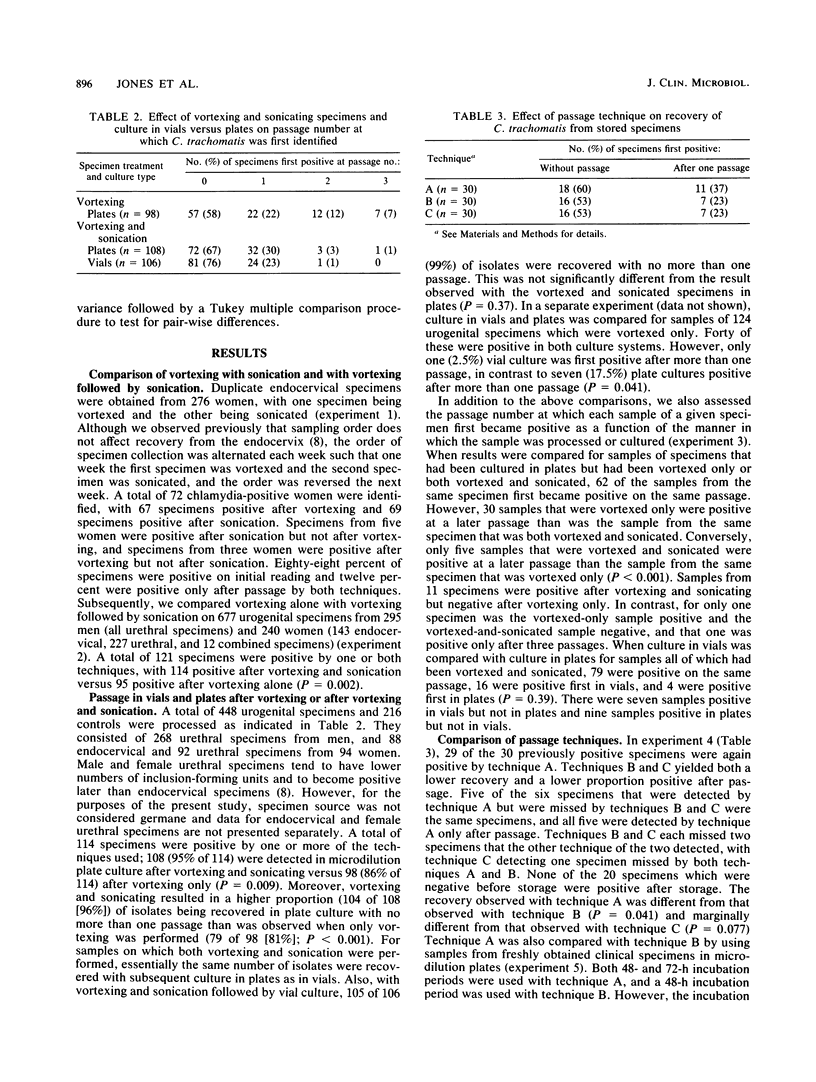
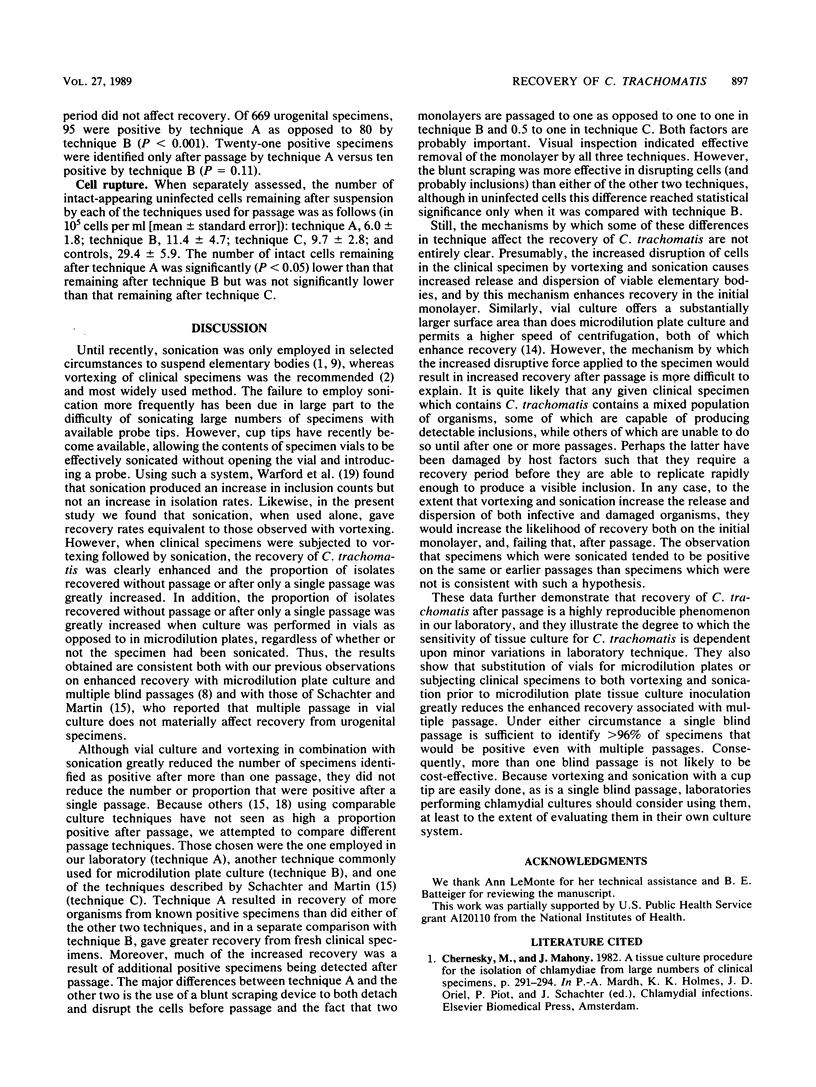
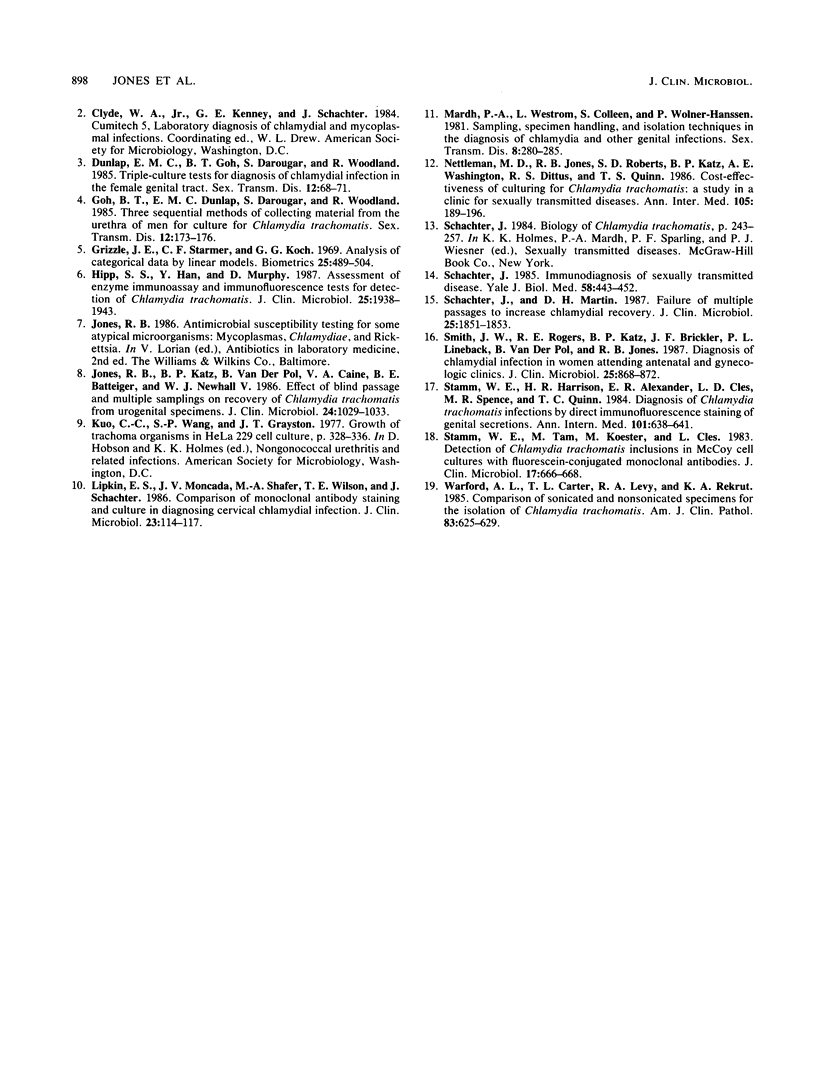
Selected References
These references are in PubMed. This may not be the complete list of references from this article.
- Dunlop E. M., Goh B. T., Darougar S., Woodland R. Triple-culture tests for diagnosis of chlamydial infection of the female genital tract. Sex Transm Dis. 1985 Apr-Jun;12(2):68–71. doi: 10.1097/00007435-198504000-00003. [DOI] [PubMed] [Google Scholar]
- Grizzle J. E., Starmer C. F., Koch G. G. Analysis of categorical data by linear models. Biometrics. 1969 Sep;25(3):489–504. [PubMed] [Google Scholar]
- Hipp S. S., Han Y., Murphy D. Assessment of enzyme immunoassay and immunofluorescence tests for detection of Chlamydia trachomatis. J Clin Microbiol. 1987 Oct;25(10):1938–1943. doi: 10.1128/jcm.25.10.1938-1943.1987. [DOI] [PMC free article] [PubMed] [Google Scholar]
- Jones R. B., Katz B. P., van der Pol B., Caine V. A., Batteiger B. E., Newhall W. J. Effect of blind passage and multiple sampling on recovery of Chlamydia trachomatis from urogenital specimens. J Clin Microbiol. 1986 Dec;24(6):1029–1033. doi: 10.1128/jcm.24.6.1029-1033.1986. [DOI] [PMC free article] [PubMed] [Google Scholar]
- Lipkin E. S., Moncada J. V., Shafer M. A., Wilson T. E., Schachter J. Comparison of monoclonal antibody staining and culture in diagnosing cervical chlamydial infection. J Clin Microbiol. 1986 Jan;23(1):114–117. doi: 10.1128/jcm.23.1.114-117.1986. [DOI] [PMC free article] [PubMed] [Google Scholar]
- Mårdh P. A., Weström L., Colleen S., Wølner-Hanssen P. Sampling, specimen handling, and isolation techniques in the diagnosis of Chlamydial and other genital infections. Sex Transm Dis. 1981 Oct-Dec;8(4):280–285. doi: 10.1097/00007435-198110000-00007. [DOI] [PubMed] [Google Scholar]
- Nettleman M. D., Jones R. B., Roberts S. D., Katz B. P., Washington A. E., Dittus R. S., Quinn T. S. Cost-effectiveness of culturing for Chlamydia trachomatis. A study in a clinic for sexually transmitted diseases. Ann Intern Med. 1986 Aug;105(2):189–196. doi: 10.7326/0003-4819-105-2-189. [DOI] [PubMed] [Google Scholar]
- Schachter J. Immunodiagnosis of sexually transmitted disease. Yale J Biol Med. 1985 Sep-Oct;58(5):443–452. [PMC free article] [PubMed] [Google Scholar]
- Schachter J., Martin D. H. Failure of multiple passages to increase chlamydial recovery. J Clin Microbiol. 1987 Oct;25(10):1851–1853. doi: 10.1128/jcm.25.10.1851-1853.1987. [DOI] [PMC free article] [PubMed] [Google Scholar]
- Smith J. W., Rogers R. E., Katz B. P., Brickler J. F., Lineback P. L., Van der Pol B., Jones R. B. Diagnosis of chlamydial infection in women attending antenatal and gynecologic clinics. J Clin Microbiol. 1987 May;25(5):868–872. doi: 10.1128/jcm.25.5.868-872.1987. [DOI] [PMC free article] [PubMed] [Google Scholar]
- Stamm W. E., Harrison H. R., Alexander E. R., Cles L. D., Spence M. R., Quinn T. C. Diagnosis of Chlamydia trachomatis infections by direct immunofluorescence staining of genital secretions. A multicenter trial. Ann Intern Med. 1984 Nov;101(5):638–641. doi: 10.7326/0003-4819-101-5-638. [DOI] [PubMed] [Google Scholar]
- Stamm W. E., Tam M., Koester M., Cles L. Detection of Chlamydia trachomatis inclusions in Mccoy cell cultures with fluorescein-conjugated monoclonal antibodies. J Clin Microbiol. 1983 Apr;17(4):666–668. doi: 10.1128/jcm.17.4.666-668.1983. [DOI] [PMC free article] [PubMed] [Google Scholar]
- Warford A. L., Carter T. L., Levy R. A., Rekrut K. A. Comparison of sonicated and nonsonicated specimens for the isolation of Chlamydia trachomatis. Am J Clin Pathol. 1985 May;83(5):625–629. doi: 10.1093/ajcp/83.5.625. [DOI] [PubMed] [Google Scholar]


